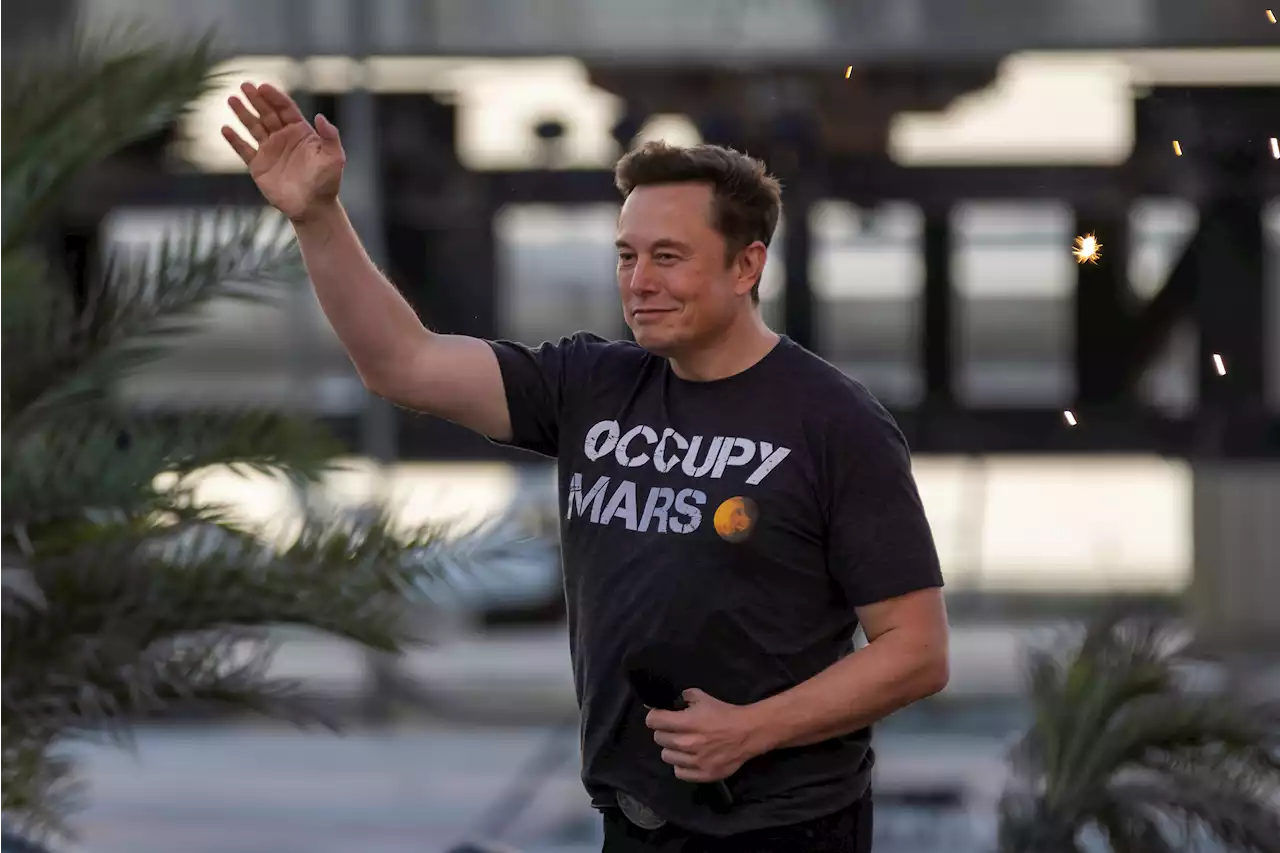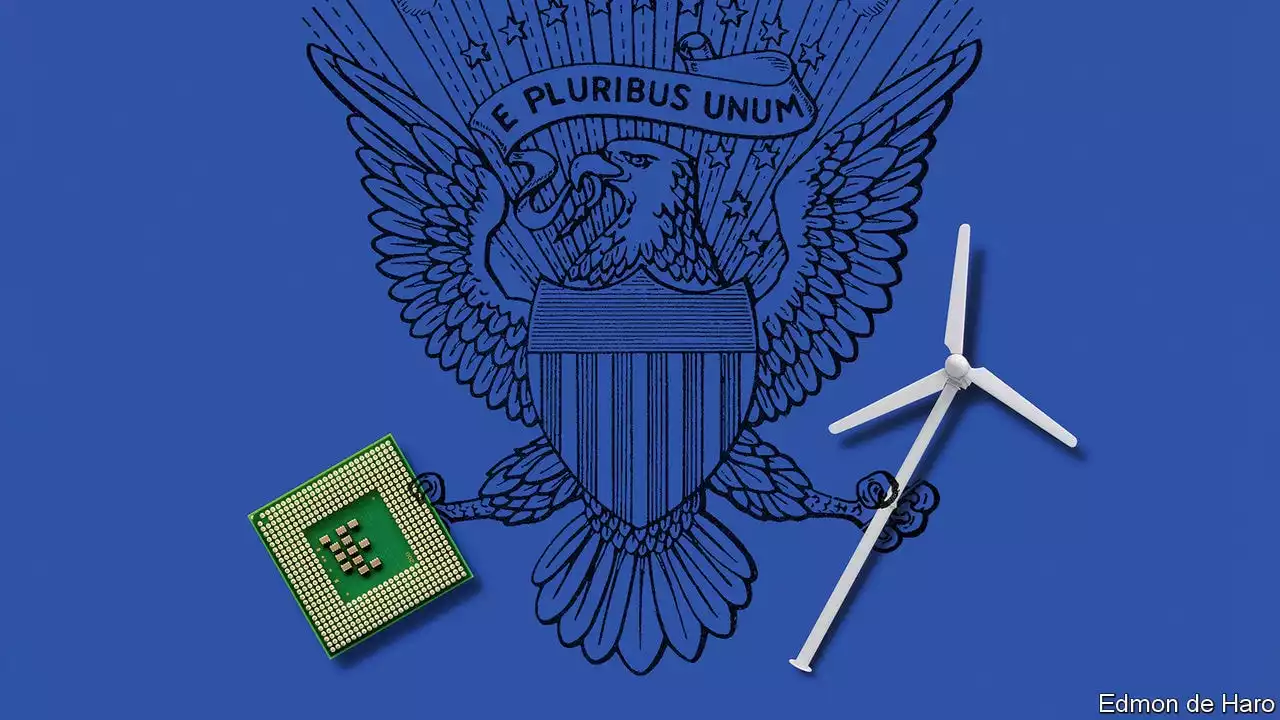Joe Biden is using industrial policy to create jobs, cut emissions and boost manufacturing
Save time by listening to our audio articles as you multitaskOn October 20th Mr Biden returned to the site of the accident. Reconstruction would normally take at least two years. But thanks in part to a $1.2trn investment in infrastructure that he signed into law, Mr Biden could boast that this time the bridge would be back up by Christmas. “For too long, we talked about building the best economy in the world,” he said. “We didn’t do it, but we’re finally getting to it. We’re getting it done.
It is under Mr Biden, therefore, that the shift has taken full effect . The debate within government circles is no longer about whether to pursue industrial policy at all, but about how to make it most effective. By the same token, the administration is not seeking to revive untrammelled globalisation; instead, it wants to isolate rivals and recraft commercial ties with allies.
But whereas Mr Trump’s stimulus arrived when America was suffering the economic equivalent of cardiac arrest, Mr Biden’s came as it was staging a healthy recovery. He injected so much money into the economy that demand for goods swelled massively—and with it, inflation. Some of the pot will provide incentives for the manufacture of lithium batteries, offshore-wind installation vessels, carbon-capture facilities and more. Most tantalising, though, is the portion that will go into research and development. Even those sceptical about America’s capacity to implement a successful industrial policy are more optimistic about the government’s role in supporting innovation.
Democrats believe that these requirements will help generate both a bigger pool of skilled workers and a bigger supply of well-paid jobs. Even if the change is only marginal, a few high-profile investments in the rustbelt offer voters a glimmer of hope. Ohio is getting electric-vehicle battery factories; West Virginia wind farms and Pennsylvania robotics manufacturers.
For friend-shoring to work, the White House will have to make its buy-American rules more flexible. Promisingly, it has adjusted domestic-content requirements for electric vehicles to include parts made in Canada and Mexico, although not other countries with which America has free-trade deals.
United Kingdom Latest News, United Kingdom Headlines
Similar News:You can also read news stories similar to this one that we have collected from other news sources.
 Meet the crafty West Yorkshire mum selling high-end floral arrangements using chicken wireA mum creates high-end expensive-looking floral arrangements which last months using foliage from her garden, chicken wire and command hooks - for just £12.
Meet the crafty West Yorkshire mum selling high-end floral arrangements using chicken wireA mum creates high-end expensive-looking floral arrangements which last months using foliage from her garden, chicken wire and command hooks - for just £12.
Read more »
 Sophie Habboo Reveals The £20 Face Mask She’ll Be Using The Night Before Her WeddingSophie Habboo speaks exclusively to Grazia and reveals she'll be using this £20 face mask the night before her wedding next year.
Sophie Habboo Reveals The £20 Face Mask She’ll Be Using The Night Before Her WeddingSophie Habboo speaks exclusively to Grazia and reveals she'll be using this £20 face mask the night before her wedding next year.
Read more »
 Environment Secretary Thérèse Coffey says she tackles climate change by using ‘permanent cups’Thérèse Coffey says she tackles climate change by using ‘permanent cups’ 🔴 The Environment Secretary struggled to answer what she does in her own life to tackle the climate crisis, amid controversy over the PM's decision not to attend COP27
Environment Secretary Thérèse Coffey says she tackles climate change by using ‘permanent cups’Thérèse Coffey says she tackles climate change by using ‘permanent cups’ 🔴 The Environment Secretary struggled to answer what she does in her own life to tackle the climate crisis, amid controversy over the PM's decision not to attend COP27
Read more »
 Jermaine Jenas given driving ban for using phone behind wheelThe One Show presenter was also caught speeding in a separate incident earlier this year.
Jermaine Jenas given driving ban for using phone behind wheelThe One Show presenter was also caught speeding in a separate incident earlier this year.
Read more »
 Ukraine Has Been Using Elon Musk's Satellites And Russia Is Not Happy About ItEver since Russia invaded Ukraine last February, the Ukrainian army has been making use of the SpaceX Starlink satellites for battlefield communications. Russia is not happy about it
Ukraine Has Been Using Elon Musk's Satellites And Russia Is Not Happy About ItEver since Russia invaded Ukraine last February, the Ukrainian army has been making use of the SpaceX Starlink satellites for battlefield communications. Russia is not happy about it
Read more »
 Ultra-sensitive molecular detection of gene fusions from RNA using ASPYRE - BMC Medical GenomicsBackground RNA is a critical analyte for unambiguous detection of actionable mutations used to guide treatment decisions in oncology. Currently available methods for gene fusion detection include molecular or antibody-based assays, which suffer from either being limited to single-gene targeting, lack of sensitivity, or long turnaround time. The sensitivity and predictive value of next generation sequencing DNA-based assays to detect fusions by sequencing intronic regions is variable, due to the extensive size of introns. The required depth of sequencing and input nucleic acid required can be prohibitive; in addition it is not certain that predicted gene fusions are actually expressed. Results Herein we describe a method based on pyrophosphorolysis to include detection of gene fusions from RNA, with identical assay steps and conditions to detect somatic mutations in DNA [1], permitting concurrent assessment of DNA and RNA in a single instrument run. Conclusion The limit of detection was under 6 molecules/ 6 µL target volume. The workflow and instrumentation required are akin to PCR assays, and the entire assay from extracted nucleic acid to sample analysis can be completed within a single day.
Ultra-sensitive molecular detection of gene fusions from RNA using ASPYRE - BMC Medical GenomicsBackground RNA is a critical analyte for unambiguous detection of actionable mutations used to guide treatment decisions in oncology. Currently available methods for gene fusion detection include molecular or antibody-based assays, which suffer from either being limited to single-gene targeting, lack of sensitivity, or long turnaround time. The sensitivity and predictive value of next generation sequencing DNA-based assays to detect fusions by sequencing intronic regions is variable, due to the extensive size of introns. The required depth of sequencing and input nucleic acid required can be prohibitive; in addition it is not certain that predicted gene fusions are actually expressed. Results Herein we describe a method based on pyrophosphorolysis to include detection of gene fusions from RNA, with identical assay steps and conditions to detect somatic mutations in DNA [1], permitting concurrent assessment of DNA and RNA in a single instrument run. Conclusion The limit of detection was under 6 molecules/ 6 µL target volume. The workflow and instrumentation required are akin to PCR assays, and the entire assay from extracted nucleic acid to sample analysis can be completed within a single day.
Read more »
